by Chris Zeringue, Owner, MTS Marine Techincal Surveyors
The key to accuracy in a Vessel Draft Survey may very well be found in a hole in the ship.
I boarded my first vessel at the age of 17 in 1975. I was hired out of the local shape-up yard for the night shift aboard a bulker loaded with imported sugar. My job was to shovel sugar out of the vessel hold ribs (trimmer) so that the bulldozer/tractor could push the cargo to the crane bucket. My neighbor was the lead superintendent on the job and his son and I would ride to the shape-up yard with him and put our names on the list to try to get hired for a day or night. If there were not enough Union Hands for the job, they would then call out the names of the non-union hands (aka rabbits). On the days/nights that we did not make the cut, we would hitchhike or walk home, meaning we would have to cross the Mississippi River Bridge by foot at times. My other job during school was working nights and weekends for a mooring company.
The more I worked, the more I liked the Waterfront. While shoveling cargo in the bottom of ship holds, my neighbor (the superintendent) would throw an apple or orange down to me to eat. Looking up one day there was a man standing next to him just observing. When I went up out of the hold for a meal break, I asked my neighbor, Papa Deck, “who was the guy with you?” His answer was, “he is a surveyor, and his job is to verify cargo quantity and quality.” I knew from that moment that I would someday trade my shovel position to be a Surveyor.
In 1978, I was hired at my first Surveying (training) position. Now fast forward 42 years and I am one of the owners of a survey company specializing in Ag and Fertilizer products at www.mtsusa.net. I have traveled the world surveying and monitoring customer’s cargos and solving customer issues.
The one thing that has always bothered me when it came to the accuracy of cargo accountability on bulkers was how to account for water conditions. On bulk cargo carriers, cargo accountability is determined by way of a Vessel Draft Survey, based on water displacement. Many factors go into the calculations and equations, but the one factor stated to be the most important (reference- The Naval Arch, Draft Surveys) yet least controllable, because of water conditions and accessibility, is the reading of the draft marks. The draft marks are stenciled at 6 positions on the vessel’s hull (Forward/Bow port and starboard, Mid-ship port and starboard, Aft/Stern port, and starboard).
These number stencils (usually in meters) are normally 10-cm tall with 10-cm space between each number. The numbers are usually in equal numerical stencils (2, 4, 6, 8 then the next meter number). As the water touches the bottom of the number 4 (using 4 as an example) the reading is 40 cm, the middle of the 4 would be 45 cm and the top would 50 cm. Between 50 (top of the 4) and 60 (bottom of the 6), the surveyor has to make a visual judgment call. As in all surveys, the reading of the draft marks visually are judgmental calls. So, add in high swells, waves, chop, ice, obstruction, non-accessible points, and now you have guestimations.
On bulk vessels of Handy and Panamax size, the vessel’s average in TPC (tons per centimeter) is approximately 50-65. So, this means that the distance in Draft from the bottom of the Draft Mark stenciled number to the top (10-cm) represents up to 650 tons.
Even in a light chop, there is 600-700 tons of possible error, noted in this photo.
One could only imagine the judgment in .5 to 1-meter swells.
Or trying to read these in the dark of night, from a crew boat from a distance, or in heavy current. Because of anchors, buoys, and swift water, this is as close as the launch boat can safely get.
And while one is riding around the vessel obtaining drafts, the remainder of the survey (Ballast, Voids, Fuel, etc.) is out of his reach or control.
I once sent the below photo to a customer and said, “tell me where the water is and I’ll tell you what your tonnage is.”.
The Vessel Draft Survey consists of two parts, open and close, or light and heavy. The difference in water displaced between the two equals the quantity of cargo loaded (with adjustments made for ballast, bunkers, etc.). No matter the condition of the water which the vessel is sitting in, the show must go on. Time is always an issue with a vessel, and time is money. The drafts must be read, and from that, the calculations are made and the BOL (Bill of Lading) and Mates Receipt are set. Buyers and sellers trade on this number.
Many draft marks on the bow, stern, and offshore side are not accessible. I asked each of these guys in the below photo, what they had (without them saying out loud) and there was a large variance between each of their findings, and this was in calm water.
Try reading that draft from many meters away, looking down on it. This was the vantage point for the guys in the previous photo
Or try getting an accurate mid-ship draft, one of the most important readings of the survey, from this vantage point in swells.
Once the vessel is loaded, no matter what water conditions it’s loaded in, the vessel is to carry and deliver the BOL quantity (created by the Vessel Draft Survey). The seller sold the amount, the buyer bought the amount, and the vessel is paid freight on the amount. In many cases, the parties trading paper have no idea how the numbers were derived.
I guess this is why so many vessels now have a standard clause in their documents stating that they cannot guarantee the accuracy of the agreed-upon tonnage listed (verbiage differs, but generally states). It is stated that in optimal conditions, Vessel Draft Surveys are subject to .5% variances.
Now, as the vessel arrives for delivery, it is the position of the vessel to make sure that the arrival vessel draft survey matches the departure draft survey within close tolerances. If the cargo is delivered into a warehouse and the warehouse is not emptied and zeroed out immediately after the delivery, a loss/gain of cargo can’t be attributed to a certain vessel. In many cases, the tonnage on the “paper trail” is kept in close tolerances, regardless of the cargo aboard or delivered. In some cases, common cargo warehouses may take more than a year (and many vessel deliveries) to zero out all cargo. In a case where a vessel delivers to another vessel or onto barges, there is an instant check and balance, a shortage or overage is noticed immediately. On an overage, you will not hear a peep, but on a shortage you, as the receiver surveyor are looked at as if you are responsible for the shortage, just for being the messenger of bad news. In my opinion, shortages outweigh overages manyfold, due to the vessel wanting to error on the side of caution to not exceed destination arrival draft restriction requirements, or carry cargo which they will not get freight. In most cases, the source of the problem can be attributed to the conditions of the water surface at the load port, yet is hidden in a paper trail.
How could this issue be eliminated? And is there a more accurate way to read the drafts? Well, devices have been made (such as freeboard indicators) but are not practical in all water, wave, and current applications. Years ago I invented such a device, which worked very well, but it would have to be attached to the hull at the draft marks, which is not practical and can’t always be achieved. As I would say, when it is needed (in heavy sea swells and fast current) it couldn’t be used, and when it could be used (in perfectly calm water conditions) it is not needed. The one thing that keeps echoing in my mind is a hole in the ship (aka The Zounding Tube, named after the one who keeps thinking of it).
Having a sounding tube in the mid-ship point of the vessel (on a new build), or one Port and one Starboard, mid-ship, on a retrofit, through an existing ballast tank, which would go from keel to deck. With this, trim and list would not affect the readings because of their central location. In a perfect world, three tubes (one Fwd, Mid, & Aft) could be added, to adust for hog and sag. A chart could be applied so that an ullage/outage could be taken (from a fixed given point to the water within the tube/pipe) and converted to draft. This draft reading would not be affected by waves, swells, etc., due to hydraulic pressure and the fact that water is calm below the surface. Accuracy could be achieved. I have always asked myself if this is possible and would it work?
At this point I would have to leave the idea with Naval Architects and Class Societies, Vessel designers and builders, as I am not well versed in stress and build-out of vessels. One would think that as a proof of concept, a simple temporary test could be performed using a PVC pipe on the outer hull at mid-ship to compare reading accuracy. I guess as one works a lifetime at his/her craft, they hope to leave it better than they found it and also hope to leave their mark, as did Plimsoll in 1876.
I do know that billions of dollars are traded based on Vessel Draft Surveys, which are subject to accuracy by the water which the vessel lays afloat.
Disclaimer:
The views, information, or opinions expressed in this article are solely those of the author and do not necessarily represent those of TheNavalArch Pte Ltd and its employees
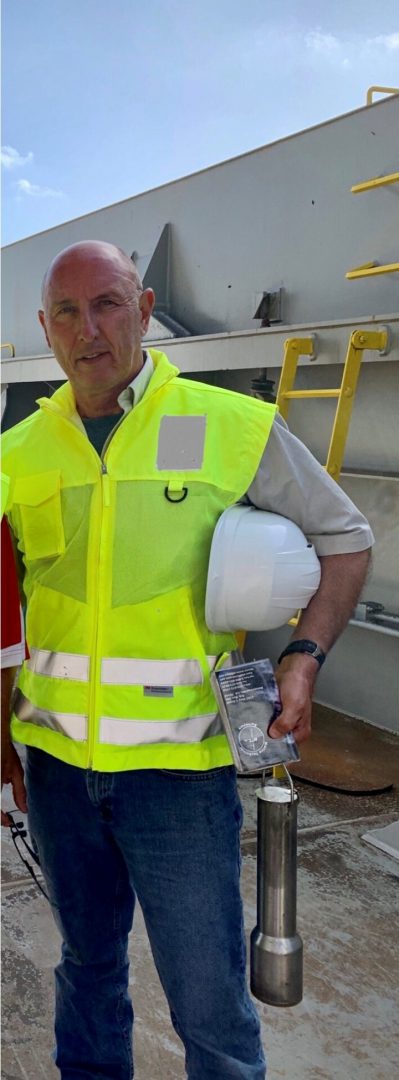
Chris Zeringue
Owner, Marine Technical Surveyors (MTS)
Born in August of 1958, one of six children of a working class family, for Larry ”Chris” Zeringue, the old cliche of “born and raised on banks of the Mississippi River” could not be more true.
With his homes from birth to manhood being only yards from the river’s edge in the small town of Donaldsonville Louisiana – (all homesteads in settlement called Smoke Bend)
The Mighty Mississippi became Chris’s play ground as a child, passion as young man and gateway to the world as an adult.
By the age of 17 Chris was working on the river – his passion and pride for his work was only outpaced by his energy levels and tireless efforts as a hard worker and businessman.
After many years of working on the river, In 1993 Zeringue founded and co-owned Marine Technical Surveyors (with 2 other seasoned surveyors).
Zeringue worked day and night as a river rat and in suit and tie to see MTS to what it is today. MTS employs and has employed many great people, family and friends, over the past 28-years.
And like the waters of the river, and so many of its southbound vessels, Zeringue too would see his way across the world to many major ports.
Pursuing that same passion on the behalf of his customers – representing their cargo and their reputations in numerous ports in countless countries.
The Zounding tube is only one of many ideas that Zeringue has arrived at in his efforts to better represent the most accurate accounts of cargo.
For Zeringue, it is not the recognition of an invention that bring his ideas to life – but rather the pride, passion and energy he takes and puts forth in the responsibility of accounting for another’s goods
TheNavalArch Interview Series: Mr Steven Lu
Mr. Steven LuManaging DirectorEpoch Offshore Engineering (Shanghai) Co., Ltd. TheNavalArch's Interview Series is an endeavor to get insights from the best engineering and business brains in the industry, and present them to its users for the larger benefit of the...
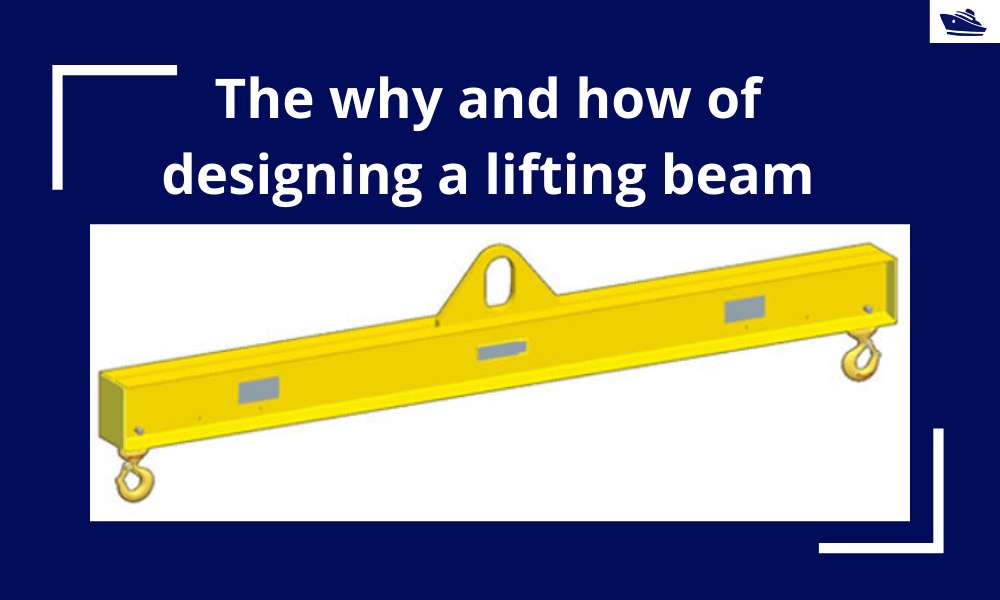
The why and how of designing a lifting beam
Lifting beams are universally applied gear used widely in various types of lifting operations, onshore and offshore. In this article, we will explore the design of a basic lifting beam and see what design checks are needed to establish the suitability of the beam for...
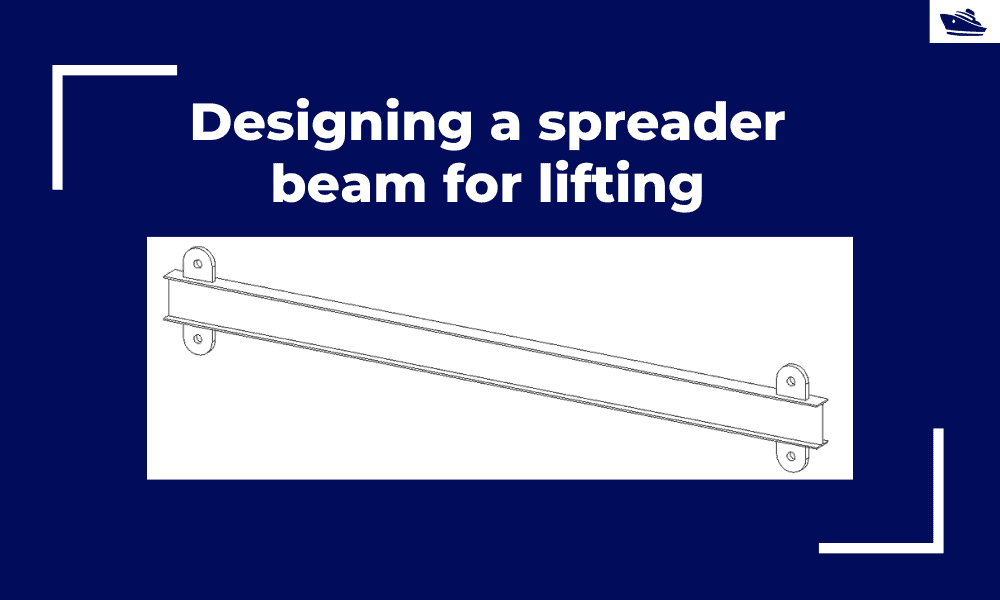
Designing a spreader beam for lifting
Spreader beams are universally applied gear which is widely used in various types of lifting operations, onshore and offshore. In this article, we will explore the design of a basic spreader beam and see what design checks are needed to establish the suitability of a...
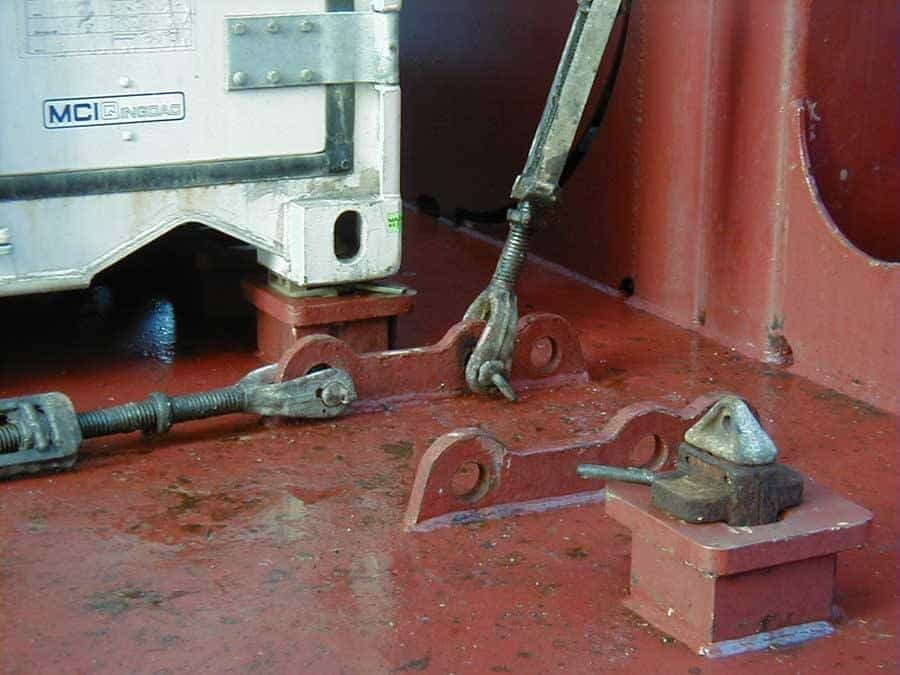
Designing a pad-eye: little items with big intricacies
Pad-eyes are one of the smallest and most universally used structural items in the maritime and Oil & Gas industry. They are used for a variety of purposes too: from a simple seafastening of a cargo to deck of a vessel, to complicated lifting operations involving...
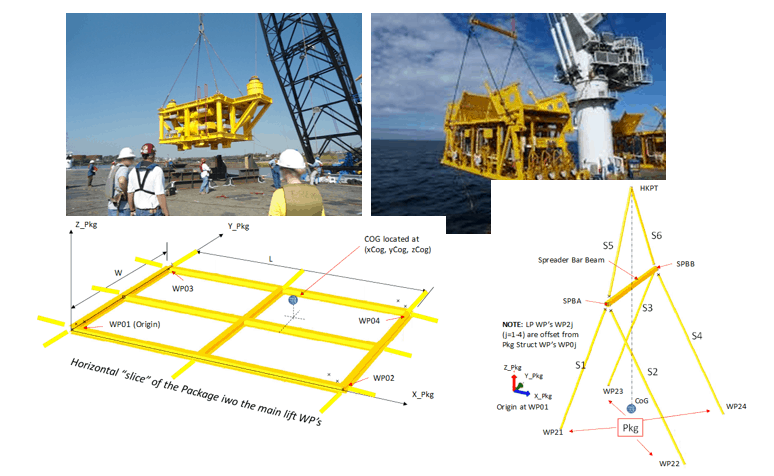
Preliminary Rigging Arrangement Design OF 4 point, Single Hook Lifts for Non-Specialists
by Michael Harwood, PE, PMP Overview Lifting by crane is a basic construction operation that dates back to at least Sixth Century BC (ancient Greece for example) and the lifting operation itself dates back much further. It is a very common operation in present-day...
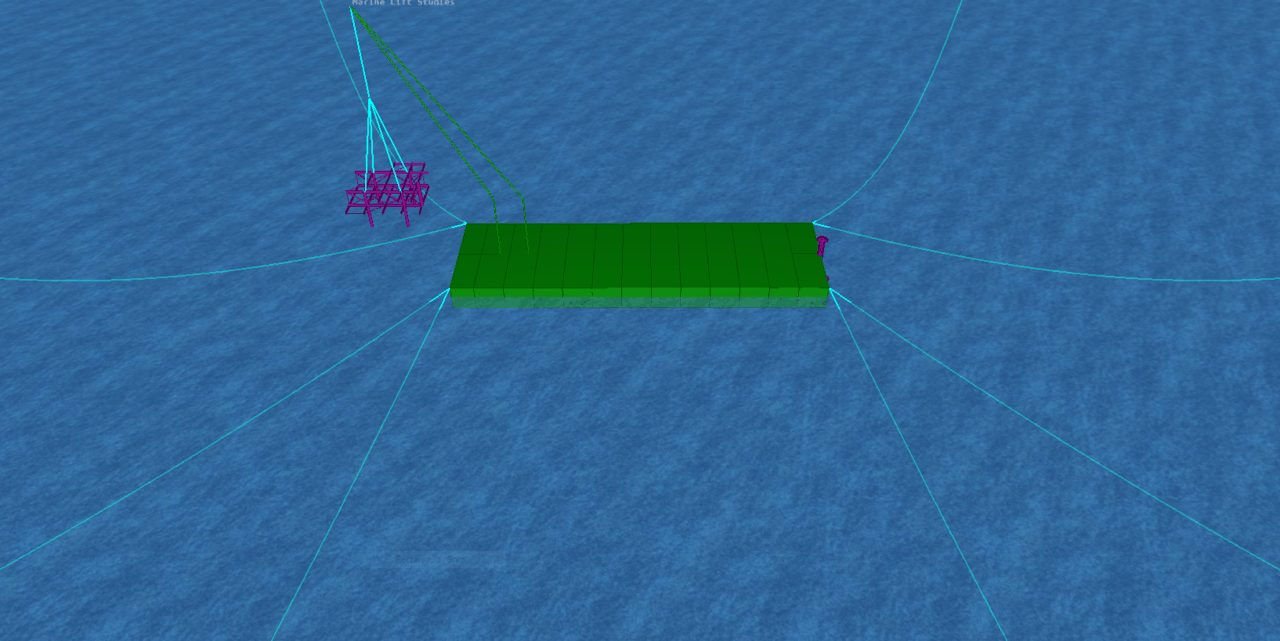
Marine Lifting – Engineering and Planning
Ever since the offshore industry has expanded to deeper waters, one topic of broad and current interest, that has dominated the industry, is the weight of topsides lifted offshore. Installation contractors advertise engineering feats accomplished by...

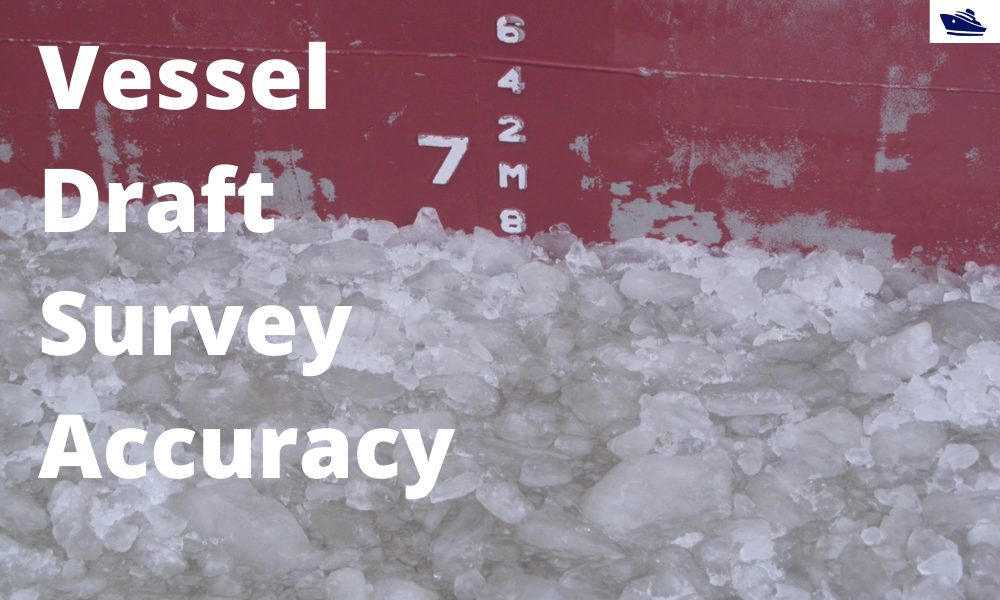
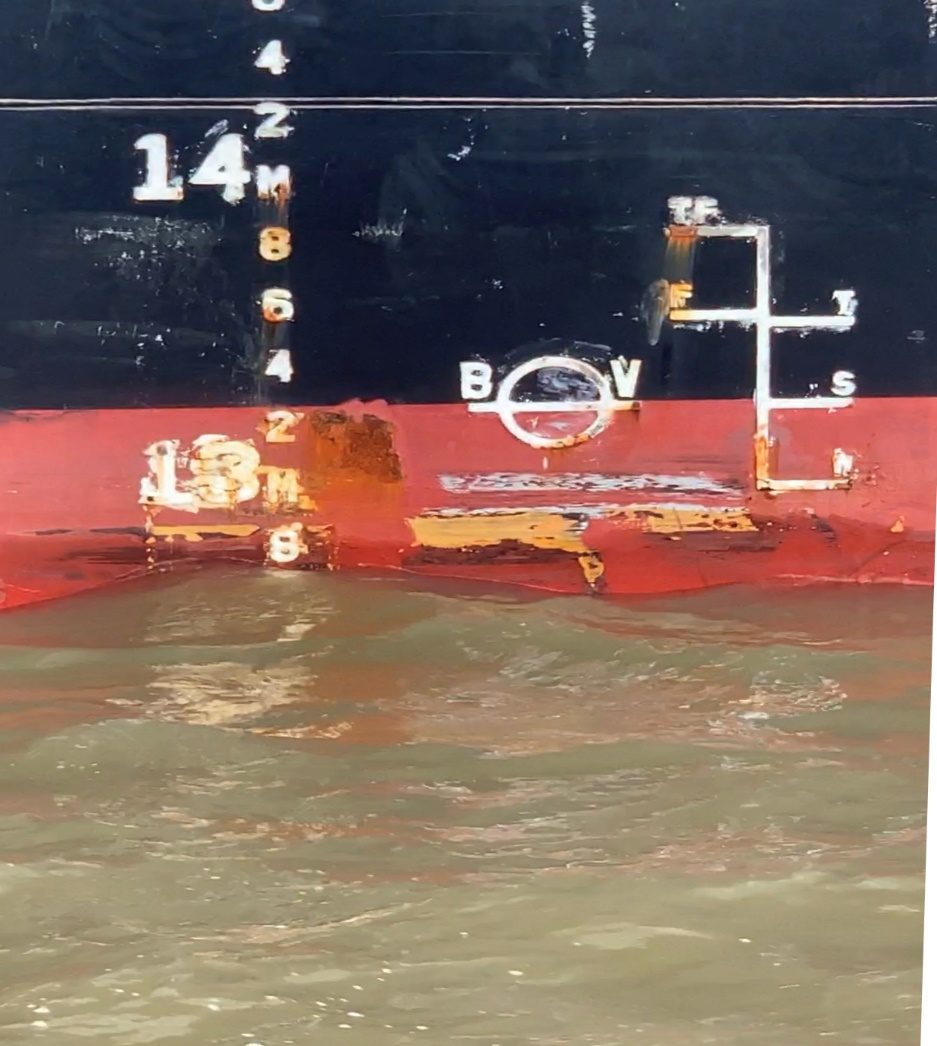


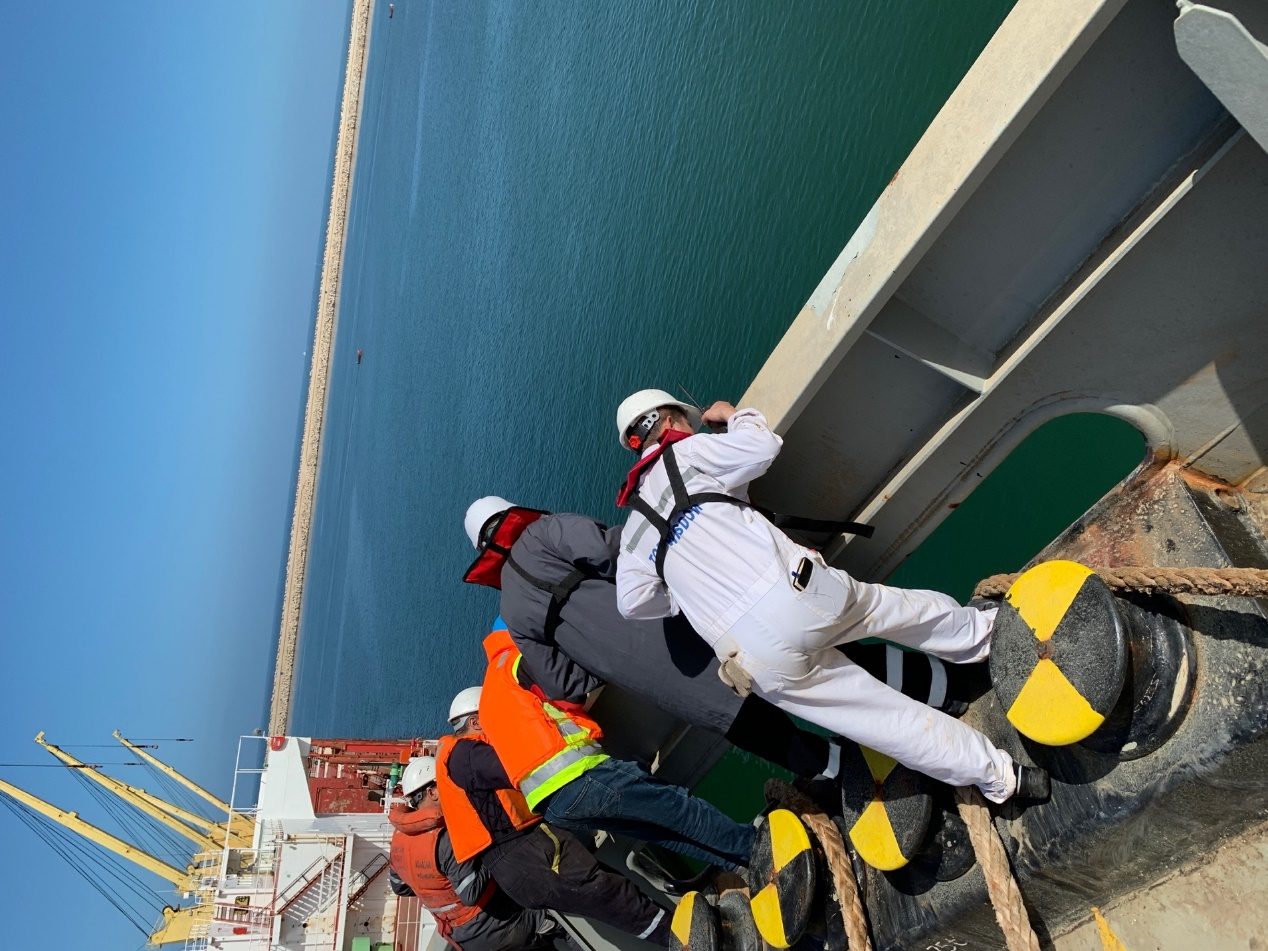
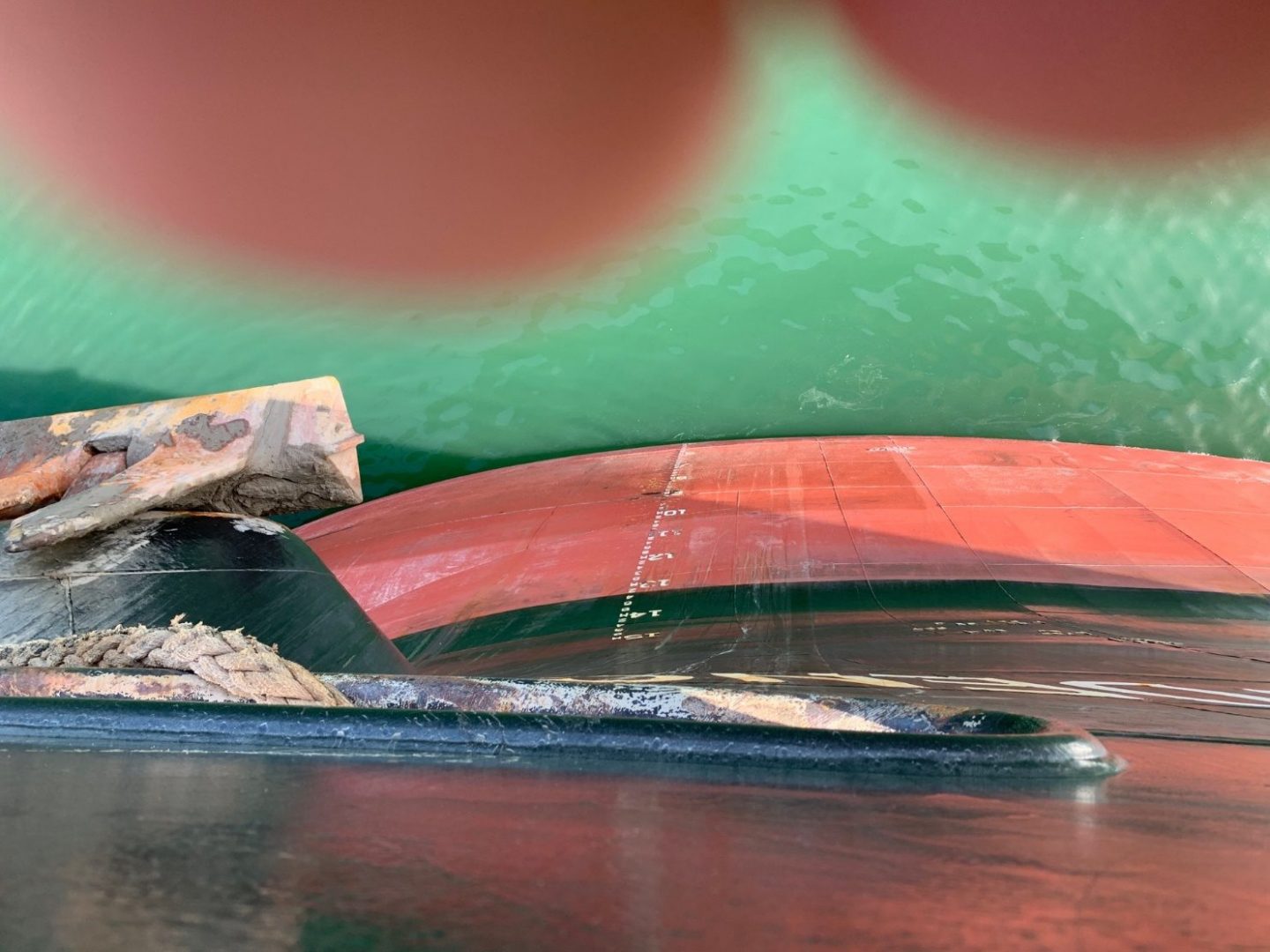
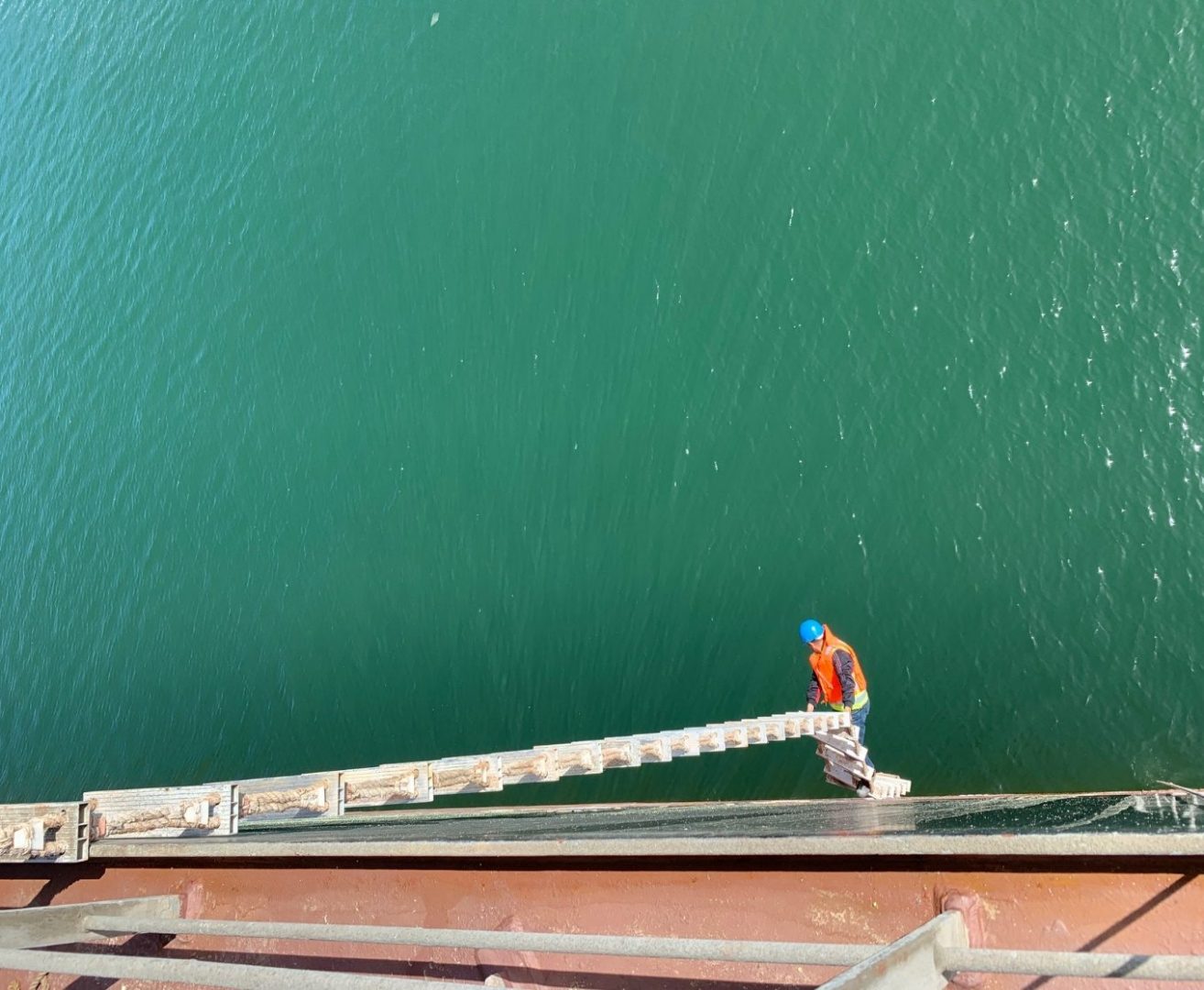
Years ago, I thought of ships could be measured via Centerline pipes at FP, AP, and LBP/2. Only a small hole at the bottom would let the water seek it’s own level without wave action. This is how we installed tide gauges on ocean fishing piers.
William E George
NCB Retired Senior Surveyor, Seattle
Connect.weg@gmail.com
William, thanks for your comment and I feel that all surveyors would agree that they have had judgment calls in rough water that they were not comfortable with. I have discussed this topic with VDS Instructors, Chief Officers, Naval Architects, etc. and they all agree it would be worth a try. I hope that this gets some traction in our industry
-Chris
How draft survey, is accurate when is carried out in miss river?
When, 2 anchors are in the water , 8 mooring lines on the buoys.
Ships draft is affected.
As one of the ex-employees of MTS, it’s always been an honor and, of course, a great luck for me to work with those great people in MTS.
Mr. Chris Zeringue, with his pride, passion and great sense of responsibility, has a very deep insight in this marine surveying industry, to which he has always been throwing efforts.
VDS issue, as important as quality issue, is always the major source of dispute for most of the vessel loading/unloading, and believe or not, this issue is 100% manipulated. Try to look at the picture from another aspect, if all the sellers/buyers/vessel companies could do the business exactly and strictly as what is stated in the contract, there would be no room for marine surveying. However, the solid fact calls for the existence of the marine surveyors.
It is never an easy job to be a marine surveyor, especially when the quality/quantity issues arise, you will have to face the pressure from many sides, sometimes even from political or powerful government authorities, but one thing should always be kept in mind by a marine surveyor that holding your integrity should be deemed as important as a bird cherishing its feather, because the integrity is the life of the marine surveyor, reputation is the life of your company, and trust from your client is the very foundation of your business. Throughout my working experience as a surveyor, I’ve seen some people sold their integrity to money or to power. But I must say that MTS people are never among them, that is why some people hate MTS, but the more people hate MTS, the more proud MTS should feel, the shinnier the brand of MTS is, becasue MTS only speaks the truth and does not bow to money or to power.
By sharing his experience, Mr. Zeringue is leading an example to all people in this industry. If you are a newbie in this industry, read this artical carefully, it helps you get prepared; if you are a veteran in this industry, also read this artical carefully, it helps re-light up your passion, pride and sense of responsibility.
As naval architects in the South of France we frequently conduct lightweight checks and inclining tests associated with 5 year surveys. For some time we have been using an electronic inclinometer for the stability tests but for reading drafts, which is an equally important part of both lightweight checks and inclining tests, our accuracy is no better than as described in this article. We have already tried using a vertical tube to eliminate wavelets by measuring from 2 metres underwater, and we also had occasional success using a laser rangefinder focused on a plank floating awash with the water surface close to the draft mark.
We have now decided to develop an electronic system which, like the inclinometer, will take draft readings ten times per second over a period of a minute and average them in software. The unit will be automatic, but it still requires the sensor to be held against the side of the hull, (possibly with magnets). It should be ready in a couple of months.
Great article Chris. Very demonstrative with excellent pictures. I used such a device when I worked on Hopper Dredges back in the 80’s to allow us to know our fore and aft drafts from the bridge of the ship. This was for the purposes of trimming and loading to our max draft before going to the disposal area. I don’t think it was accurate enough for draft survey purposes but it was quite a useful tool for us. Maybe the accuracy of such devices are better now with the advances in technology. It was manufactured by IHC Holland.
I have known Mr Chris nearly 10 years, have been jointly handle issues related to draft survey , thanks to Mr Chris can come up with such a good idea I think will be of great help for draft to solve disputes, I have been a crew of 10 years, 4 years inspector, 7 years port captain, therefore experience and solve the dispute over the draft many times, most disputes related to draft reading, as Mr Chris mentioned draft reading by relevant staff business skills and extrinsic factors, so the combined difference will be a lot, and then affect the quantity of the goods and the signing of the bill of lading and trade cooperation relations,Any on the one hand, therefore has the correct reading is want to see, Mr Chris mentioned in the vessel with measuring tube read draft number, the proposal is very great, if have the electronic screen reading will be more intuitive, objections will be less, this kind of knowledge transformation involves to the shipbuilding, the progress of science and increasingly today should be able to implement the great ideas, thanks Mr Chris has been on the job support, I wish the MTS is getting better and better.
Measuring the draft mid ships port and starboard forward and aft by use of the hydrostatic pressure is not new but I have never seen it on a bulk carrier. I first encountered draft indicators on a container vessel built in 1976 which used mercury columns as indicators. Later instruments used air and are combined with the ballast and fuel tank indicators.
Interesting article
Indeed readings at the outside is not accurate.
I have done several Light weight surveys at newbuild barges.
We had a barge with an estimated steel weight of ± 500 tons.
We paid at the net kilo, let’s say at that time $ 2,- a kilo = 500.000 x $2 = $1.000.000,-
After launching we should take the readings to settle the actual weight and end price .
The waterline area was ±1000 m2 so 1 cm draft = ±10 tons
So one cm difference in draft reading is a plus or minus of $20.000,-
I can still remember rowing around a barge with shipyard director, class surveyor and myself as owners rep. .
At each draft mark I mentioning as low (=cheap) as reasonably possible let’s say 49 cm.
Director as deep (=expensive) as possible: let’s say 52 cm
and after some bargaining we concluded : 50 cm.
This six times (at each draftscale) and at the end we had a reasonable average draft.
Some time later the shipyard naval architect came with a calculated light weight, but tried to cheat us with the real and moulded draft (incl. or excluding keel plate another ± 10 tons displacement) and the density of the water. (1.01 or 1.015 is another ±$ 5.000,- discussion).
On another project I did inclination test in Rotterdam, there I had a camera which could take time laps pictures with 1 second interval , so in the office I could calculate for each scale the actual draft
You mentioned the TUBE , this is to my idea already done at many vessels.
With a good sensor you can read the draft at the MM accurate.
HOWEVER one must be very careful with the design and using this tube.
Let’s assume the above mentioned box shaped barge with tubes.
Upstream rive Rhine density is 1,00 and I measure an average empty draft of 50,0 cm = a light weight of 500 tons
We load up to 4,000 m = displacement of 4000 tons = 3500 tons of cargo.
At arrival at sea port Rotterdam density is 1,025
so the REAL draft of the barge will 4,000m/1,025 = 3,9024 M
but the tube is still filled with freshwater and the level in the tube will be close to 4,00 m
if not measured & compensated in a correct manner the difference can be 10 cm = 100 tons
there are 2 ways measuring the level in a ballast tank :
1e measuring the pressure at the bottom of the tank, in that case it does not matter if the tube is filled with sea or fresh water, the pressure in the tube is same as the pressure outside.
2e measuring the ullage between water level & deck, in that case the water in the tube needs to be refreshed before taking the drafts.
So if not measured & corrected in a correct manner the difference can be 10 cm = 100 tons.
And once I was in drydock at a Dutch Navy vessel and the load master computer indicated a draft while the ship was already dry, so the tube was stil filled with water, meaning that you should always be alert and check the figures .
Great blog you have here.. It’s difficult to find excellent writing like yours nowadays.
I seriously appreciate people like you! Take care!!